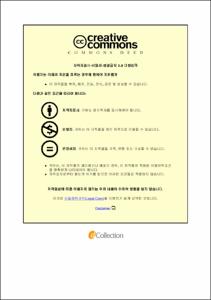Emerging macrolide-resistant strains during an outbreak of Mycoplasma pneumoniae infections in Korea
- Abstract
- Background: Mycoplasma pneumoniae is a pathogen causing community-acquired pneumonia, and macrolides basically play an important role in M. pneumoniae treatment. Since the first report of emerging macrolide resistant M. pneumoniae (MRMP) in Japan, the prevalence of MRMP has been steadily increased worldwide and it would be the significant threat to use of macrolide in M. pneumoniae infection especially in children. The aim of this study was to determine of subtype of M. pneumoniae strains and investigate its association with macrolide resistance in Korea
Methods: During an outbreak of M. pneumoniae infections in Korea between 2014 and 2016, 249 clinical specimens were analyzed for molecular genotyping determination and macrolide resistance. M. pneumoniae subtypes determined by genotyping of p1 gene DNA, and confirmed the mutations associated with resistance (A2063G and A2064G) by sequencing the targeted domain V regions of the 23S ribosomal RNA gene. We analyzed the relationship between subtype and the presence of macrolide resistance.
Results: Two hundred one (80.7%) were classified as subtype 1 and 48 (19.3%) as subtype 2. Macrolide resistance genotype occupied 180 (72.3%) among the whole clinical specimens. One hundred sixty nine (80.7%) of the subtype 1 were macrolide-resistant, and of these, the A2063G mutation was identified in 167 (98.8%) and the A2064G mutation was identified in 2 (1.2%) in the remaining. On the other hand, only 11 (19.3%) of the subtype 2 were a macrolide-resistant genotype, which was all the A2063G mutation. We found that the emergence of macrolide-resistant genotypes were more frequent in the subtype 1 (p<0.001).
Conclusion: This is the first study assessing whether genotyping is related to MRMP the outbreak of M. pneumoniae in Korea. Our findings revealed subtype 1 was predominant and a macrolide resistance-associated M. pneumoniae genotype. Given that the current increasing trend of the incidence of MRMP over the world, the epidemiological monitoring of macrolide resistance has become necessary in order to effective antibiotic treatment.
|배경 : Mycoplasma pneumoniae은 지역 사회 획득 폐렴을 일으키는 주요 병원균이며, macrolides는 기본적으로 M. pneumoniae 치료에 중요한 역할을 한다. 일본에서 2001년 macrolides resistant 기본적으로 M. pneumoniae 첫 번째 보고 이후, MRMP의 유행은 전 세계적으로 꾸준히 증가 해 왔다. 특히 소아에서 MRMP 감염은 치료실패로 이어질 수 있어 문제가 된다. 본 연구의 목적은 국내 유행 동안 우세한 M. pneumoniae subtype 및 유전자형과 macrolide 내성과의 관련성을 분석하고자 한다.
방법 : 2014 년에서 2016 년 사이에 한국에서 M. pneumoniae 감염 유행 동안 확보 가능한 균주 249주를 분석하였다.macrolide 내성에 대해 249 주를 분석 하였다. M. pneumoniae subtype은 p1 유전자 DNA의 genotyping 방법으로 분석하고, 23S ribosomal RNA 유전자의 target domain V 영역을 sequencing함으로써 내성관련 돌연변이 (A2063G와 A2064G)를 확인 하였다.
결과 : 전체 균주에서 제 1 형 type (Macroride resistance genotype)은 전체 임상 검체 중 180 주 (72.3 %)를 차지 하였다. 제 1형 type 196 주 (80.7 %)는 macrolide 내성이었으며, 이 중 A2063G 돌연변이는 167 주 (98.8 %), A2064G 돌연변이는 2 개 (1.2 %) 확인되었다. 제 2형 type 은11 (19.3 %) 주만이 A2063G 돌연변이 인 macrolide 내성유전자형이었다. 우리는 MRMP 발생이 제 1 형 type 에서 더 빈번하다는 것을 발견했다 (p <0.001).
결론 : 본 연구는 국내에서 M. pneumoniae의 MRMP 발생과 유전자형이 관련이 있는지를 평가 한 최초의 연구이다. 우리의 결과에 의하면 최근 국내 유행 동안 제 1 형 type 우세하였고 MRMP는 제2형보다 제 1형에서 좀 더 빈번하게 나타났다. 세계적으로 MRMP 발생이 증가하고 있는 추세이므로 효과적인 항생제 치료를 위해서는 MRMP대한 꾸준한 역학 적 감시가 필요하다.
- Issued Date
- 2017
- Awarded Date
- 2018-02
- Type
- Dissertation
- Alternative Author(s)
- Hye Young Lee
- Affiliation
- 울산대학교
- Department
- 일반대학원 의학과
- Advisor
- 성흥섭
- Degree
- Master
- Publisher
- 울산대학교 일반대학원 의학과
- Language
- eng
- Rights
- 울산대학교 논문은 저작권에 의해 보호받습니다.
- Appears in Collections:
- Medicine > 1. Theses (Master)
- 파일 목록
-
-
Download
 200000002863.pdf
기타 데이터 / 471.45 kB / Adobe PDF
200000002863.pdf
기타 데이터 / 471.45 kB / Adobe PDF
-
Items in Repository are protected by copyright, with all rights reserved, unless otherwise indicated.